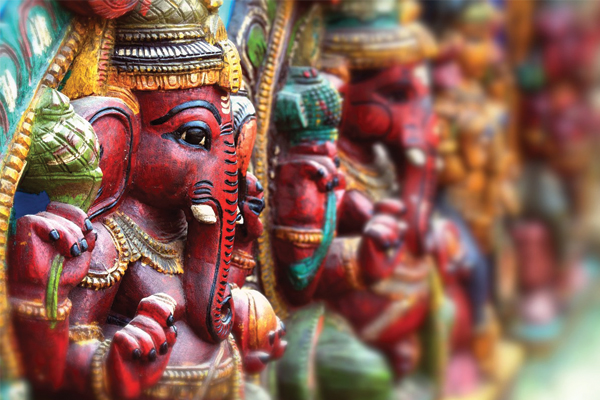Hidden Scientific Logic Behind 7 Hindu Traditions
Posted on 15/09/2016 I by: AstroSaathi

Hinduism is abundant in scientific approaches. Though there are many myths and superstitions attached, but not all the traditions Hindus follow are vague. The oldest of all traditions followed has its own logical reason behind. But as those were passed from generations to generations, their meanings got slipped away.
Here are Hidden Scientific Logic Behind 7 Hindu Traditions.
Reason behind visiting Temple... The temple structure is built after the idol has been placed. It is strategically located at a place where the positive energy is abundantly available from the magnetic and electric wave distributions of north/south pole thrust.
Reason behind worshipping Idol... Hinduism propagates idol worshipping. Scientifically, idols were introduced to increase concentration and meditate without mental diversion during prayers. Psychiatrists opine that man shapes his thoughts as per what he sees.
Reason behind Namaste... Hindus prefer folding hands in Namaste instead of shaking to show their respect to others. Scientifically, the pressure points located on the tip of fingers are pressed together when we join our palms in the form of Namaste. These points are connected to our eyes, ears and mind. Pressing those help us remember the person we are greeting for a longer time.
Reason behind the Tilak... The Tilak prevents loss of energy, the red kumkum between the eyebrows retain energy and control various levels of concentration. Applying kumkum on the mid brow region presses the Adnya chakra which facilitates blood supply to the face muscles.
Reason behind touching Feet... Charan sparsh is our way of showing respect to the elderly. Bowing down in respect reduces ego with the heart emitting positive thoughts and energy.
Reason behind Surya Namaskar... Hindus consider Sun as God and paying regards to the energy source their water offering ritual. Scientifically, looking at Sun rays through water or directly at that time of the day is good for eyes.
Reason behind throwing coins in river... Coins in the past used to be made of copper which is a vital metal for the human body. Throwing coins in the river was a way to intake sufficient copper as rivers were the only source of drinking water back then.

